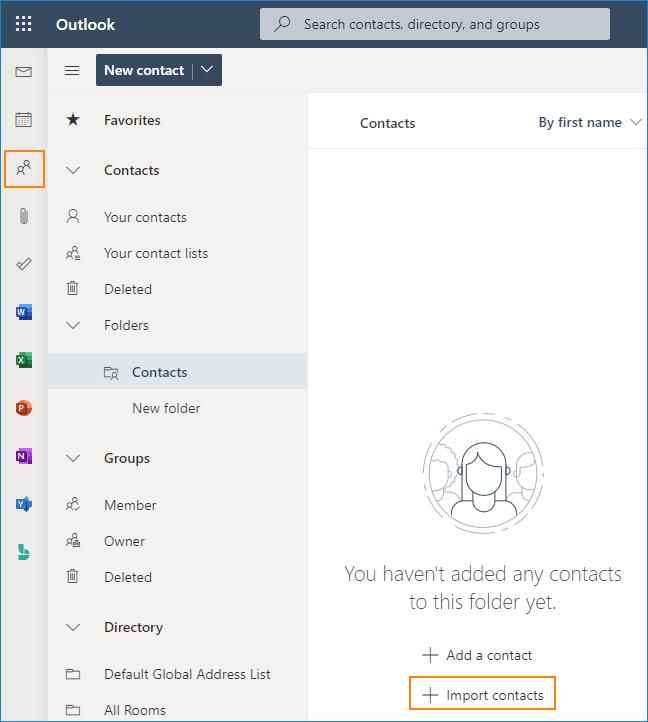

Each user can only see their own contacts, but there will be a group of other managers who can see everyone’s contacts. Let’s say that the business tells you that in SharePoint, the contact lists need to be restricted.
#IMPORT CONTACTS TO OUTLOOK ONLINE DRIVER#
The main driver here is who can see the contact records. In this case, the business came to you and said “we need to store out contact lists from our sales team in SharePoint”. Hopefully before you configure anything in SharePoint, you have a need or requirement. First thing we need to do is determine how many lists we will need, and that will depend on our requirement. Since SharePoint is the repository we want to use to primarily store our contacts, we need to create a list or lists to store them. Export the contacts from Outlook to SharePoint.Setting up SharePoint - Create the SharePoint list(s).To complete this procedure, the first part requires a power user / site owner or some user with at least design privilege (preferably full control to set permissions as needed).
#IMPORT CONTACTS TO OUTLOOK ONLINE UPDATE#
The great news is that you don't have to open the SharePoint interface just to add or update a contact.

Let’s also assume that you’re not using a xRM system to track these contacts like Microsoft Dynamics CRM or, but instead you want to use SharePoint. But what if you wanted to make those contacts available to be viewed by other coworkers? For example, you’re a member of a sales team, and you need the ability for your sales peers and managers on your team to be able to see your contacts (and you see their contacts as well). You can access them from your mobile device, the web, etc. In addition to email, another oft-used feature of Outlook is storing contacts.


 0 kommentar(er)
0 kommentar(er)
